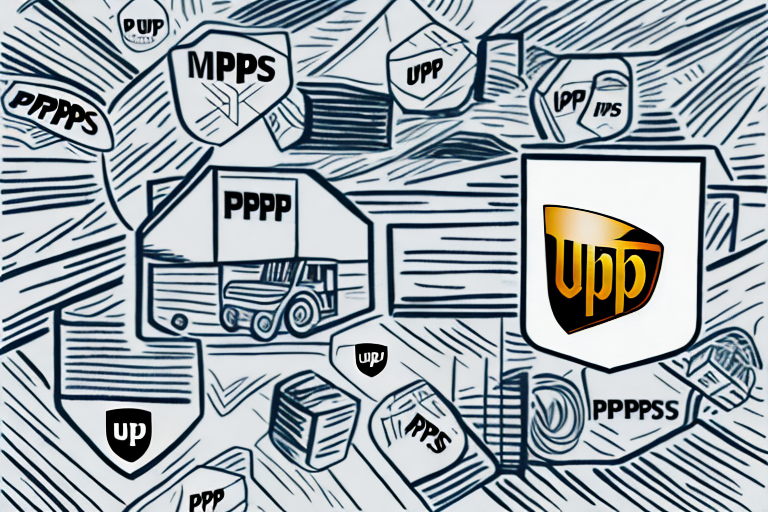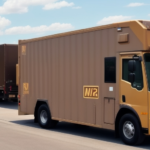Get the Best Rates on UPS Shipping
If you're looking to ship your products or packages with UPS, you know that shipping rates and fees can vary widely based on several factors. However, with careful planning and thorough research, you can discover ways to save money and obtain the best rates on UPS shipping. In this article, we'll provide you with strategies to help you understand UPS shipping rates, negotiate better prices, maximize the value of UPS shipping services, effectively package your shipments, and much more!
Understanding UPS Shipping Rates and Fees
Before you start shipping with UPS, it's crucial to understand how their rates and fees are calculated. UPS shipping rates are determined by several factors, including the weight and size of the package, the shipping destination, the level of service you choose, and any additional surcharges or fees that may apply.
For instance, UPS offers various services such as standard ground shipping, next day air delivery, two-day shipping, and more. Each service type comes with different rates and fees that you should be aware of before selecting the best option for your shipments. Additionally, UPS may apply surcharges or fees for special services like residential delivery, extended area delivery, fuel surcharges, and more. It's essential to understand these surcharges and fees to determine whether they apply to your shipment.
According to UPS's latest [Annual Report](https://www.ups.com/us/en/about/file.page?name=annual-report-and-financial-statement-2023&locale=en_US), understanding these components can help businesses better forecast shipping costs and manage their logistics budgets effectively.
How to Save Money on UPS Shipping
If you're aiming to save money on UPS shipping, several strategies can be employed:
- Optimize Weight and Size: UPS charges based on weight, so lighter packages generally cost less. Additionally, ensure that your shipment is packaged effectively to minimize size and weight without compromising the safety of the contents.
- Select the Appropriate Service Level: Standard ground shipping is often the most affordable option, though it may take longer to arrive compared to next day air or two-day shipping.
- Leverage Volume Discounts: If you ship frequently with UPS, you may be eligible for volume discounts or negotiated rates, which can significantly reduce your shipping costs.
- Use Shipping Calculators: Utilize UPS's shipping calculators to compare prices and identify the most cost-effective shipping options for your specific needs.
Tips for Negotiating UPS Shipping Rates
High-volume shippers may benefit from negotiating rates directly with UPS. By securing lower prices and better terms, significant savings can be achieved over time. Here are some tips to aid in negotiating better UPS shipping rates:
- Research Competitor Rates: Investigate other carriers to understand their rates and terms. This information can serve as leverage in your negotiations with UPS.
- Highlight Shipping Volume: Emphasize your shipping volume and specific requirements. High shipping volumes can provide more negotiating power.
- Commit to a Shipping Volume: Be prepared to commit to a certain number of shipments to qualify for lower rates.
- Negotiate Additional Terms: Beyond price, negotiate other terms such as delivery windows, pickup times, and service guarantees.
For more detailed strategies, refer to the [Inc. Magazine's guide on negotiating with carriers](https://www.inc.com/guides/how-to-negotiate-with-carriers.html).
Comparing UPS Shipping Rates to Other Carriers
While UPS is a leading carrier, it's always wise to compare their rates to other carriers to ensure you're getting the best deal possible. Here are some popular carriers to consider:
- FedEx: One of the largest carriers globally, offering a wide variety of shipping options and services.
- USPS: The United States Postal Service is a popular option for smaller shipments, providing affordable rates and a range of shipping options.
- DHL: A global carrier that offers both domestic and international shipping services.
When comparing carriers, consider factors such as shipping speed, reliability, shipping options, and pricing. According to the [2023 FedEx Report](https://investors.fedex.com/financial-information/annual-reports), understanding these elements can help businesses make informed decisions.
The Benefits of Using UPS for Shipping
While comparing rates and services from different carriers is important, there are several reasons why UPS might be the best choice for your shipping needs:
- Wide Range of Shipping Options: UPS offers a diverse array of shipping options and services, including ground shipping, air shipping, and more.
- Reliable Delivery: UPS is renowned for its reliable delivery and tracking services, ensuring that your shipments arrive on time and in good condition.
- International Shipping: For international shipments, UPS offers competitive rates and a variety of international shipping services.
- Advanced Technology: UPS provides advanced technology tools to help manage shipments effectively, including online tracking and shipping calculators.
These benefits are highlighted in UPS's [2023 Service Performance Report](https://about.ups.com/us/en/services/financial-information.html).
Maximizing the Value of UPS Shipping Services
To ensure you're getting the most value from UPS shipping services, consider the following tips:
- Use Shipping Calculators: UPS offers free shipping calculators to estimate shipment costs and identify the most affordable options.
- Select the Appropriate Service Level: Choose the service level that best fits your budget and shipping needs.
- Track Your Shipments: Utilize UPS's tracking tools to monitor shipments and receive updates on delivery status.
- Utilize UPS Pickup Services: Instead of dropping off packages at a UPS location, use their pickup services to save time and effort.
Implementing these strategies can lead to increased efficiency and cost savings. For more tips, visit [UPS's Business Solutions](https://www.ups.com/us/en/business-services/overview.page).
Ways to Track Your UPS Shipments and Deliveries
One of the significant advantages of using UPS is their advanced tracking and delivery services. Here are several methods to track your UPS shipments and deliveries:
- Online Tracking: Use UPS's online tracking system to monitor shipments and receive real-time updates on delivery status.
- Email Notifications: Set up email notifications to receive updates on shipments, including delivery status and estimated delivery dates.
- Mobile Tracking: Download the UPS mobile app to track shipments on the go.
- UPS My Choice: Sign up for UPS My Choice to receive text or email updates, reroute packages to a different address, or hold them for pickup.
These tracking options enhance visibility and control over your shipments, ensuring timely deliveries. For more details, visit the [UPS Tracking Services page](https://www.ups.com/us/en/services/tracking.page).
Understanding UPS Shipping Options and Delivery Times
When selecting a shipping option with UPS, it's essential to understand the various services available and their respective delivery times. Here are some common UPS shipping options and their estimated delivery times:
- Standard Ground Shipping: 1-5 business days, depending on the destination.
- Next Day Air: Delivered by the end of the next business day.
- 2nd Day Air: Delivered by the end of the second business day.
- 3-Day Select: Delivered by the end of the third business day.
- International Shipping: Delivery times vary based on the destination and chosen service level.
Note that delivery times are estimates and may vary due to factors such as weather, package size, and other logistical considerations. Always check the delivery estimates when choosing a UPS shipping option to ensure timely arrivals. For the most current information, refer to the [UPS Shipping Services](https://www.ups.com/us/en/services.page).
How to Ship Internationally with UPS at Competitive Rates
Shipping internationally with UPS can be both efficient and cost-effective if approached correctly. Here are some tips to ensure you get the best rates and services:
- Choose the Right Service Level: UPS offers a range of international shipping services, including express, standard, and economy options. Select the one that fits your budget and delivery needs.
- Package Your Shipment Effectively: International shipping can be more complex than domestic shipping. Proper packaging helps avoid issues with customs and prevents damage during transit.
- Understand Customs Requirements: Each country has its own customs regulations. Familiarize yourself with these requirements to ensure compliance and avoid delays.
- Utilize UPS's International Tools: Take advantage of UPS's international tools and resources, such as shipping calculators and duty and tax estimation tools.
For comprehensive guidelines, visit UPS's [International Shipping Solutions](https://www.ups.com/us/en/international.page).
Common Mistakes to Avoid When Using UPS for Shipping
While UPS is known for its reliable and high-quality shipping services, there are common mistakes that can lead to increased costs and delays. Avoid the following to ensure smooth shipping operations:
- Improper Packaging: Inadequately packaged shipments can be damaged in transit or cause delays at customs. Always package your shipments properly.
- Ignoring Delivery Estimates: Failing to check estimated delivery times for each UPS service can result in shipments arriving later than needed.
- Overlooking Surcharges and Fees: UPS may apply various surcharges and fees. Understand these costs and determine if they apply to your shipment.
- Misunderstanding Customs Requirements: International shipping requires compliance with destination country customs regulations. Ensure you understand and adhere to these requirements to prevent delays.
By avoiding these common pitfalls, you can streamline your shipping process and reduce unnecessary expenses. For more tips, refer to the [UPS Shipping Tips](https://www.ups.com/us/en/services/shipping-tips.page).
Tips for Packaging Your Shipments with UPS
Proper packaging is vital for UPS shipping to ensure your shipments arrive safely and without delays. Here are some tips to help you package your shipments effectively:
- Choose the Right Size Box: Select a box that appropriately fits your shipment. Use filling and padding materials to protect the contents.
- Seal the Box Securely: Use high-quality tape to seal the box securely, ensuring there are no holes or gaps that could allow contents to fall out.
- Use Appropriate Labels and Documentation: Include all necessary labels and documentation, such as shipping labels and customs forms.
- Consider Using UPS Packaging Supplies: UPS offers a range of packaging supplies designed to protect your shipments during transit.
Implementing these packaging strategies can reduce the risk of damage and ensure compliance with UPS's shipping requirements. For more information, visit [UPS Packaging Solutions](https://www.ups.com/us/en/services/packaging.page).
How to Choose the Right Size Box for Your Shipment with UPS
Choosing the correct box size is essential for efficient and cost-effective UPS shipping. Follow these tips to select the right size box:
- Measure Your Contents: Use a tape measure to determine the height, width, and length of your items.
- Add Space for Packing Materials: Allow extra space for packing materials like bubble wrap, foam, or packing peanuts to protect your items.
- Select an Appropriately Sized Box: Choose a box that fits your measurements comfortably without leaving excessive empty space.
- Avoid Overpacking: Do not overfill your box, as this can increase the risk of damage during transit.
Proper box sizing not only protects your items but can also help reduce shipping costs by minimizing dimensional weight charges. For more guidance, refer to UPS's [Box Size Guidelines](https://www.ups.com/us/en/services/packing-delivering.page).
The Importance of Accurate Weight and Dimensions for UPS Shipments
Accurate measurements of weight and dimensions are critical when shipping with UPS. Here's why:
- Accurate Pricing: UPS shipping rates are based on weight and dimensional weight. Accurate measurements ensure you're charged the correct price.
- Reliable Delivery Estimates: Delivery estimates rely on precise weight and dimension data to provide accurate timelines.
- Proper Handling: Accurate weight and dimensions help UPS handle your shipment appropriately, reducing the risk of damage or misrouting.
Ensuring accuracy in your shipment's weight and dimensions can lead to cost savings and more reliable delivery times. For detailed instructions, visit [UPS Shipping Guidelines](https://www.ups.com/us/en/services/shipping-guidelines.page).
Understanding the Different Types of UPS Shipping Services Available
UPS provides a wide range of shipping services, each tailored to meet different needs. Understanding these services can help you choose the best option for your shipments:
- Standard Ground Shipping: The most affordable option, typically taking 1-5 business days for delivery.
- Next Day Air: The fastest shipping option, guaranteeing delivery by the end of the next business day.
- 2nd Day Air: Guarantees delivery by the end of the second business day.
- 3-Day Select: Ensures delivery by the end of the third business day.
- International Shipping: Offers express, standard, and economy services for global shipments.
- Pickup and Delivery Options: Includes services like UPS My Choice, scheduled pickups, and more to save time and effort.
Selecting the right UPS shipping service depends on factors such as budget, delivery timelines, and destination. For a comprehensive overview, visit the [UPS Shipping Services](https://www.ups.com/us/en/services.page).
Additional Resources
- Visit ShipScience for more UPS shipping insights.
- UPS Help Center for detailed service information.
- ShipStation for shipping software solutions.




















